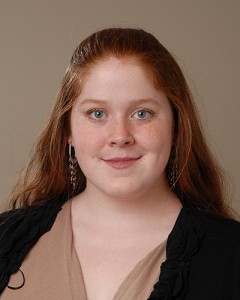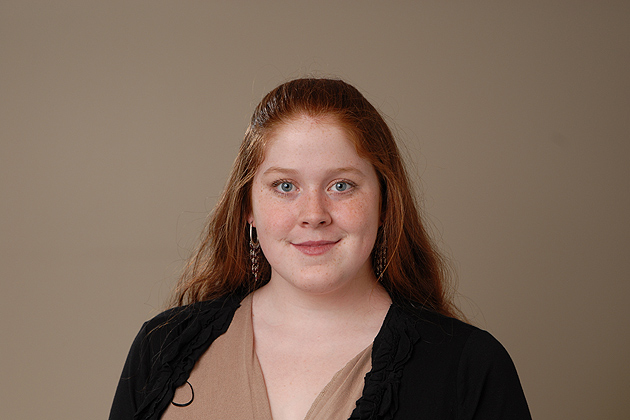As the University counts down to Commencement, UConn Today is featuring some of this year’s outstanding graduating students, nominated by their academic school or college or another University program in which they participated. For additional profiles of students in the Class of 2012, click here.

Alex Young is a bit of a magician. She combines art and a vivid imagination with science and organizational skills. The result? Science that makes for beautiful artwork and artwork that illustrates scientific principles.
A pathobiology major in the College of Agriculture & Natural Resources with nearly enough credits in illustration for a double major in the School of Fine Arts as well, Young knew she had some tough decisions to make as a high school student in Darien. “I took every art course that was offered, and every science class, too. I couldn’t figure out how I was going to combine these interests when I went to college.” It was then that a science teacher mentioned that she should consider a career as a medical illustrator; and that suggestion set the stage for what has turned out to be a busy and rewarding four years at UConn.
Although she arrived on campus as an animal science major, it took exactly one freshman orientation session for Young to change her mind. “Pathobiology was actually sort of an accidental blessing,” she says. “I hadn’t realized that animal science was more about agriculture than pure science, and when I realized I’d made a wrong choice for me, I just picked pathobiology because it sounded interesting.
“Not to be completely nerdy, but it turned out to be exactly right. Some of the biological organisms that attack our bodies are beautifully functioning machines, and they’re beautiful microscopically, too. I’m a very visual person and when I saw living things under the microscope, and later when I was working in the lab, I knew I wanted to draw what I was seeing.”
According to her major advisor, Salvatore Frasca Jr., associate professor of pathobiology, “Alex, [with her multiple interests,] was a first for me; she’s really blazed a trail. She’s managed all the challenges it took to weave together two really diverse interests, and she’s done it at a high level. She’s also done it with such an upbeat attitude and great sense of humor that it makes it fun to work with her.”
Young’s senior fine arts illustration project consists of anatomical drawings of squid. “There are not a lot of anatomical atlases of cephalopods [octopus, squid, nautilus, cuttlefish],” she says, “but they’re really complex and amazing animals. I bought squid and dissected them and took them apart piece by piece. I photographed everything and then drew from the photos.”
As part of a year-long pathobiology internship with Frasca, Young took histological images of fish and marine animals at Mystic Aquarium. “Alex took photo micrographs of all sorts of aquatic animals,” Frasca says, “and in doing so she found art and she found a way to captivate people’s imaginations. She took pictures of things like suction cups on the tentacles of an octopus and close-up shots of the gills of fish. It’s an amazing collection and the Aquarium staff was so impressed, they’re mounting a gallery of her work in April.”
Young is not a fan of the typical scientific illustrations and diagrams found in most textbooks, so she’s particularly excited about a course in 3D animation that she’s been taking this semester in UConn’s Digital Media Center.
“I’ve discovered that I just love animation,” she says. “It’s so different from anything I’ve ever done, and I know I want to learn more about it. It seems like a perfect way to combine science and art in one sort of cohesive program. In the future, I think it will make a great teaching tool.”
Young hopes to take a year or so to get some practical experience working or doing an internship, hopefully involving animation. Then, it will be grad school for advanced degrees in scientific illustration and medical illustration.
Fortunately, she says, “I don’t need much sleep.”



